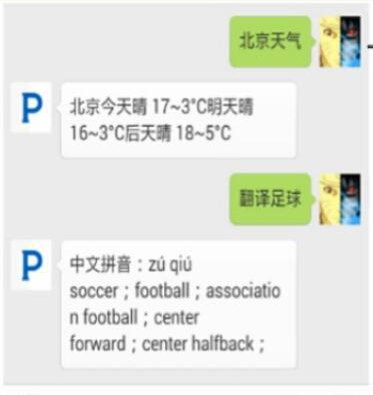学习java是一个漫长的过程,这需要学习的人投入大量的精力和时间沉浸其中,才能有所得。今天主要为大家介绍一下,微信公众号数据交互原理图解,以及展示接入开发模式和响应的代码。
1.首先我们应该准备:微信公众号和外网映射工具(开发调试)。并且与微信的对接的URL应该可以满足两个条件,一是在公网上能够访问,二是只支持80端口;如下图所示:


然后进入微信公众号平台,再进入开发者中心,在开发者中心中找到开发者文档,实现代码展示如下:
package org.gpf.servlet;
import java.io.IOException;
import java.io.PrintWriter;
import javax.servlet.ServletException;
import javax.servlet.http.HttpServlet;
import javax.servlet.http.HttpServletRequest;
import javax.servlet.http.HttpServletResponse;
import org.gpf.util.CheckUtil;
/**
* 接收微信服务器发送的4个参数并返回echostr
*/
public class WeixinServlet extends HttpServlet
{
public void doGet(HttpServletRequest request, HttpServletResponse response)
throws ServletException, IOException
{
// 接收微信服务器以Get请求发送的4个参数
String signature = request.getParameter("signature");
String timestamp = request.getParameter("timestamp");
String nonce = request.getParameter("nonce");
String echostr = request.getParameter("echostr");
PrintWriter out = response.getWriter();
if (CheckUtil.checkSignature(signature, timestamp, nonce))
{
out.print(echostr); // 校验通过,原样返回echostr参数内容
}
}
public void doPost(HttpServletRequest request, HttpServletResponse response)
throws ServletException, IOException
{
doGet(request, response);
}
}校验工具类代码展示如下:
package org.gpf.util;
import java.util.Arrays;
import org.apache.commons.codec.digest.DigestUtils;
/**
* 校验的工具类
*/
public class CheckUtil
{
private static final String token = "weixin";
public static boolean checkSignature(String signature, String timestamp, String nonce)
{
String[] arr = new String[]
{
token
, timestamp
, nonce
};
// 排序
Arrays.sort(arr);
// 生成字符串
StringBuilder content = new StringBuilder();
for (int i = 0; i < arr.length; i++)
{
content.append(arr[i]);
}
// sha 1加密
String temp = getSHA 1String(content.toString());
return temp.equals(signature); // 与微信传递过来的签名进行比较
}
private static String getSHA 1String(String data)
{
return DigestUtils.sha 1Hex(data); // 使用commons codec生成sha 1字符串
}
}Servlet配置代码展示如下:
servlet > <servlet-name>WeixinServlet</servlet-name> < servlet - class > org.gpf.servlet.WeixinServlet < /servlet-class> < /servlet> < servlet - mapping > <servlet-name>WeixinServlet</servlet-name> < url - pattern > /wx.do</url - pattern > </servlet-mapping>
接下来通过映射工具将本地的服务器映射到公网,从公网访问Servlet。图片展示如下:

需要注意的是,开发模式和编辑模式是互斥的,如果启动了开发模式,那么自定义菜单和自动回复将失效。
2.然后是消息的接收和响应
当普通微信用户向公众账号发消息时,微信服务器将POST消息的XML数据包到开发者填写的URL上。所以需要更改我们的Servlet中的doPost方法,因为微信服务器与我们的服务器之间是通过XML传递数据的,所以需要实现消息实体与XML之间的互相转换。可以采用第三方jar包XStream完成。
处理微信服务器与本机服务器进行交互的Servlet代码展示如下:
package org.gpf.servlet;
import java.io.IOException;
import java.io.PrintWriter;
import java.util.Date;
import java.util.Map;
import javax.servlet.ServletException;
import javax.servlet.http.HttpServlet;
import javax.servlet.http.HttpServletRequest;
import javax.servlet.http.HttpServletResponse;
import org.dom4j.DocumentException;
import org.gpf.po.TextMeaasge;
import org.gpf.util.CheckUtil;
import org.gpf.util.MessageUtil;
/**
* 微信消息的接收和响应
*/
public class WeixinServlet extends HttpServlet
{
/**
* 接收微信服务器发送的4个参数并返回echostr
*/
public void doGet(HttpServletRequest request, HttpServletResponse response)
throws ServletException, IOException
{
// 接收微信服务器以Get请求发送的4个参数
String signature = request.getParameter("signature");
String timestamp = request.getParameter("timestamp");
String nonce = request.getParameter("nonce");
String echostr = request.getParameter("echostr");
PrintWriter out = response.getWriter();
if (CheckUtil.checkSignature(signature, timestamp, nonce))
{
out.print(echostr); // 校验通过,原样返回echostr参数内容
}
}
/**
* 接收并处理微信客户端发送的请求
*/
public void doPost(HttpServletRequest request, HttpServletResponse response)
throws ServletException, IOException
{
request.setCharacterEncoding("utf-8");
response.setContentType("text/xml;charset=utf-8");
PrintWriter out = response.getWriter();
try
{
Map < String, String > map = MessageUtil.xmlToMap(request);
String toUserName = map.get("ToUserName");
String fromUserName = map.get("FromUserName");
String msgType = map.get("MsgType");
String content = map.get("Content");
String message = null;
if ("text".equals(msgType))
{ // 对文本消息进行处理
TextMeaasge text = new TextMeaasge();
text.setFromUserName(toUserName); // 发送和回复是反向的
text.setToUserName(fromUserName);
text.setMsgType("text");
text.setCreateTime(new Date()
.getTime());
text.setContent("你发送的消息是:" + content);
message = MessageUtil.textMessageToXML(text);
System.out.println(message);
}
out.print(message); // 将回应发送给微信服务器
}
catch (DocumentException e)
{
e.printStackTrace();
}
finally
{
out.close();
}
}
}按照微信的接口文档编写的文本消息实体类代码展示如下:
package org.gpf.util;
import java.io.IOException;
import java.io.InputStream;
import java.util.HashMap;
import java.util.List;
import java.util.Map;
import javax.servlet.http.HttpServletRequest;
import org.dom4j.Document;
import org.dom4j.DocumentException;
import org.dom4j.Element;
import org.dom4j.io.SAXReader;
import org.gpf.po.TextMeaasge;
import com.thoughtworks.xstream.XStream;
/**
* 实现消息的格式转换(Map类型和XML的互转)
*/
public class MessageUtil
{
/**
* 将XML转换成Map集合
*/
public static Map < String, String > xmlToMap(HttpServletRequest request) throws IOException, DocumentException
{
Map < String, String > map = new HashMap < String, String > ();
SAXReader reader = new SAXReader(); // 使用dom4j解析xml
InputStream ins = request.getInputStream(); // 从request中获取输入流
Document doc = reader.read(ins);
Element root = doc.getRootElement(); // 获取根元素
List < Element > list = root.elements(); // 获取所有节点
for (Element e: list)
{
map.put(e.getName(), e.getText());
System.out.println(e.getName() + "--->" + e.getText());
}
ins.close();
return map;
}
/**
* 将文本消息对象转换成XML
*/
public static String textMessageToXML(TextMeaasge textMessage)
{
XStream xstream = new XStream(); // 使用XStream将实体类的实例转换成xml格式
xstream.alias("xml", textMessage.getClass()); // 将xml的默认根节点替换成“xml”
return xstream.toXML(textMessage);
}
}以上就是关于微信公众号数据交互原理图解,以及接入开发模式的代码展示。想要了解更多java基础,敬请关注奇Q工具网。
推荐阅读:
